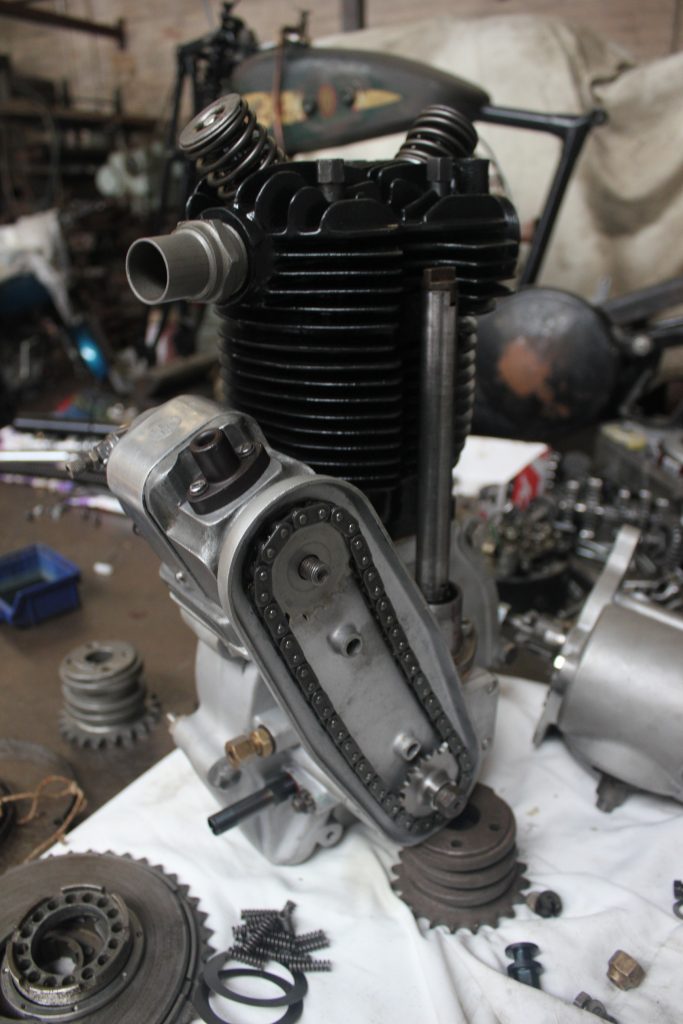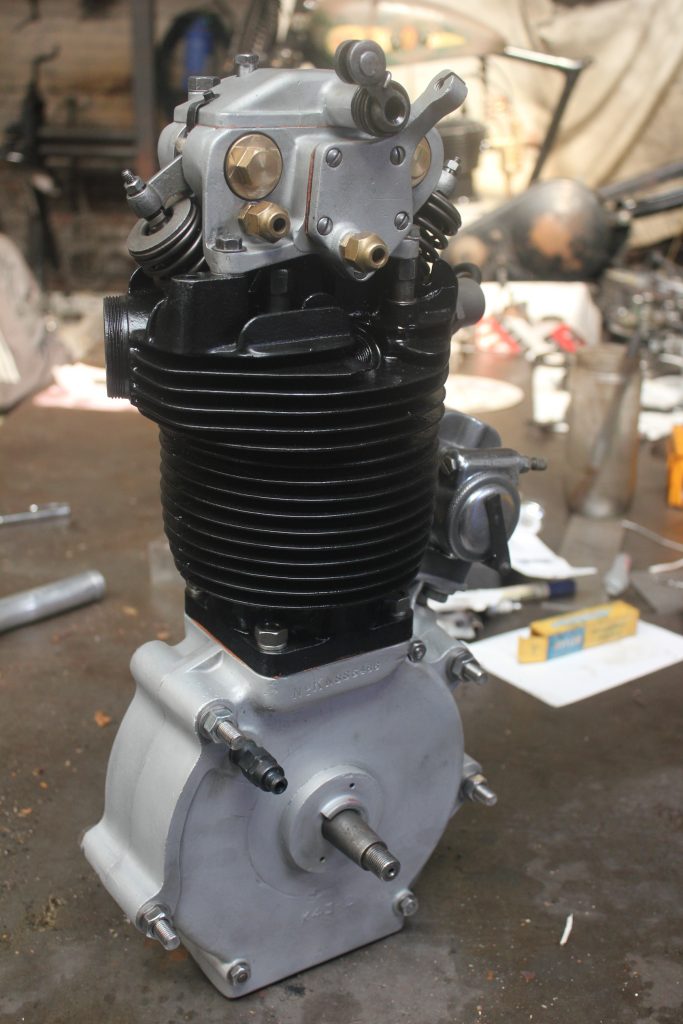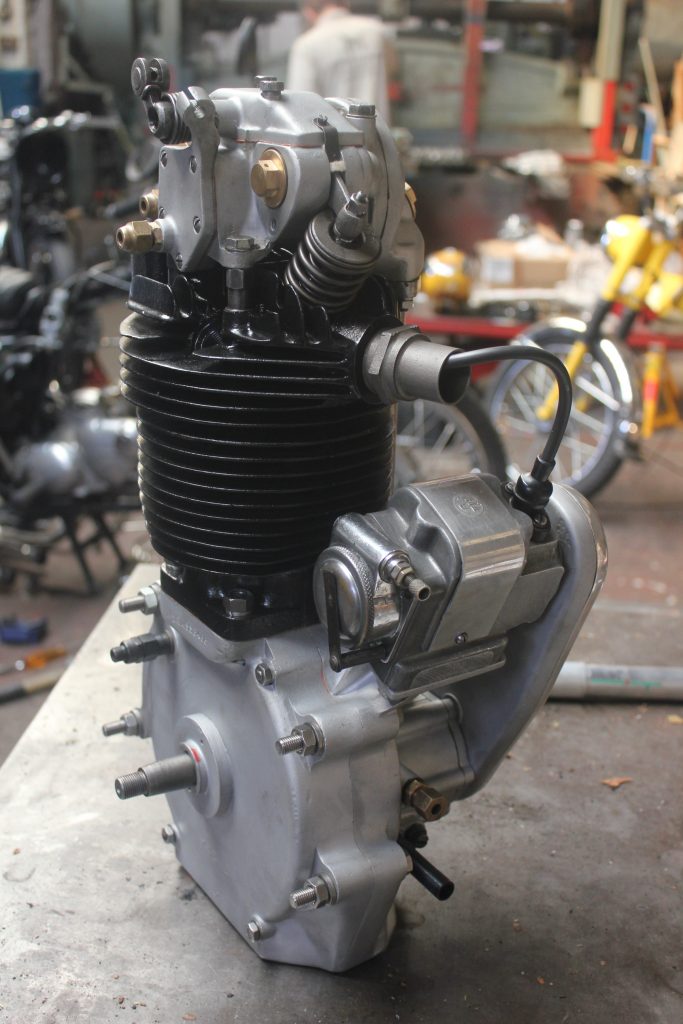In 1930 there were a number of different “K” series such as the K, K.S., K.N.S., K.S.S., K.N., K.E.S., K.C.R., K.N.S.S., K.T.T., and the K.T.P. These were all basically the same except for subtle differences such as mudguard design, primary chain case, stay, oil tank and rear racks to name a few. One of the rarest “K” series machines of 1930 was the K.N.S.S. One such machine came to use in boxes of bits, on searching through all the parts we found rare bits for the K.T.T. and early K.S.S. After whittling everything down to what we needed for the rebuild, it was found there was innumerable parts missing that we would have to source from suppliers or make using loaned parts as templates.
Very few parts are available for early Velocette, the parts that are made by suppliers are all quite simple to make or are generic through other models. Parts being available are of course all the nuts and bolts in all forms of finish including stainless steel but not oil blacked.
Rear chain-guards in one or two forms are available as well as dynamo belt covers for those models that had lighting as standard such as the K.N.S.S., K.T.S. and the K.S.S. supplied with this was an unmachined raw aluminium casting for the primary chain case. The aluminium cases were used on many of 1920’s bikes but during the early 1930s they reverted to using pressed steel cases for cost saving, a few bikes up to 1932 were fitted with the aluminium cases to deplete old stocks left in the stores.

The only part that is not in keeping but is fitted to this K.N.S.S. are the forks, the bike had been crashed in 1940s and the forks were sent to the Velocette repairs department for repair or exchange. What came back in return were the K.S.S. forks. We have been told by the owner to keep the forks on the bike for historical provenance.

There were a host of parts that we had to make such as the bevel drive tube with new bronze bushes, Ohlins couplings, kick starter with return spring housing, all the positive stop gear change mechanism and levers as well as the Cheswick and wright water bottle silencer that was lent to us for copying.

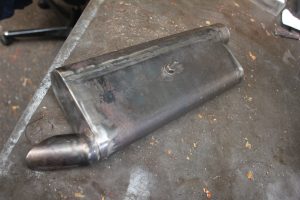
One part that I hate making is rear tool box rack and stay units as so much is tied up to them and there is no compromise on accuracy as they are a visual part of the completed machine.
When ever I build a machine whether a Velocette or BSA I like to start with the engine rebuild and get everything perfect and finish the engine timing in all aspect so when the whole bike is restored and rebuilt all I have to do is put petrol and oil in the motor and it will start without touching the engine accept for a couple of plug checks and a oil pressure test in the top bevel housing with a pressure gauge.
The wheel rims were solid but fairly pitted by rust but no pinholes to fill. the hubs after shot blasting were in new condition and are apparently very collectible, so watch this space as I am going to produce exact replicas in limited numbers. I am not going to talk too much about the gear box as they seem to be indestructible unless diabolical gear-shifting is the order or the day and sheer neglect regarding oil replenishment.
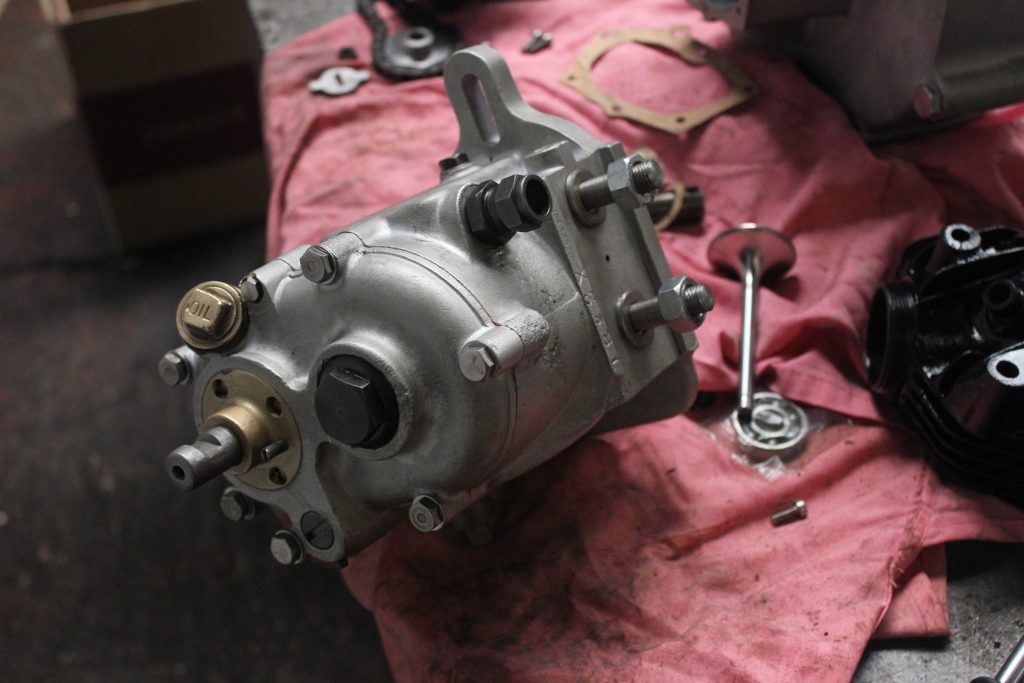
The clutch was a challenge as they can be quite finicky if not set up correctly. Who would design a thing that would attack 4 or 5 pages on how to put together and set up the complicated thing with all its foibles. One thing about it that really needs attention is the fibrax inserts. In a well used clutch the fibre gets clogged with metal debris that is not really visible by eye. When ever you strip a clutch down I would recommend cleaning with cellulose thinners and a good scrubbing with a toothbrush.
Here is what I did to a badly slipping Velocette clutch.
- Remove clutch and check that fibers are a 1/32nd proud each side of plate if new.
- Separate plane plates from friction plates.
- Vapour blast plain plates and hand dry with tissue paper.
- Soak and scrub friction plate in thinners
- Remove from solution and blow dry with high pressure air “make sure not to blow the inserts out”.
- Put the clutch back together after a little grease has been put on the big ball bearing.
The fibre inserts can be a little worn but should give no problem as long as they are proud of the plates. When the clutch is in operation it should not get overly contaminated with primary chain case oil as the oil level will only be enough for the chain to pick up and lubricate the gear, the fibres are quite tolerant to oil ingress but dirt and metallic ingress will have a detrimental affect. You will find that a clutch that gave so much trouble with slipping and difficult adjustment will be revolutionised. I would suspect from reading on the web about many clutch problems with Velocette that 80 percent of troubles stem from using oil and dirty fibre inserts.
Take a look at the pictures to see what we have made and achieved. If you require unobtainable parts or well made spares for your running machine or stalled project please feel free to contact us.
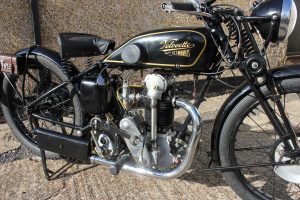
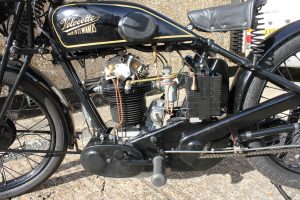

This is a message to the owner of the motorcycle regarding the starting procedure.
• Turn oil on, it is on when the slot of the screw is in line with the oil pipes, the screw is just behind the gear box in a brass block, a big screwdriver is needed to turn it on and off.
• The small lever on the right of the handlebar is the air level and this will need pushing away from you when seated on the bike.
• The small lever on the left of the handlebar is the advance lever it needs to be pushing away from the rider.
• turn on left side of tank
• Push button down on top of carb float bowl and hold down for 3 seconds, if it is done any longer than this then you will see petrol dripping from the carb, this can cause a wet spark plug.
• There is another trigger shaped small lever on the left bar, this will need to be pulled in and the engine will need to be gently kicked over 3 times with out touching the throttle.
• Let go of the throttle trigger, known as the valve lifter and give a good kick on the kick start.
• If it doesn’t fire you will have to pull trigger “valve lifter” and kick engine over again 3 times then try starting it again.
• If you get kickback or bang from exhaust it is due to inadvertently turning the throttle.
• When the engine starts, give it a little throttle but not to much as you need to gently warm the engine so you can turn the air lever by pulling towards you.

